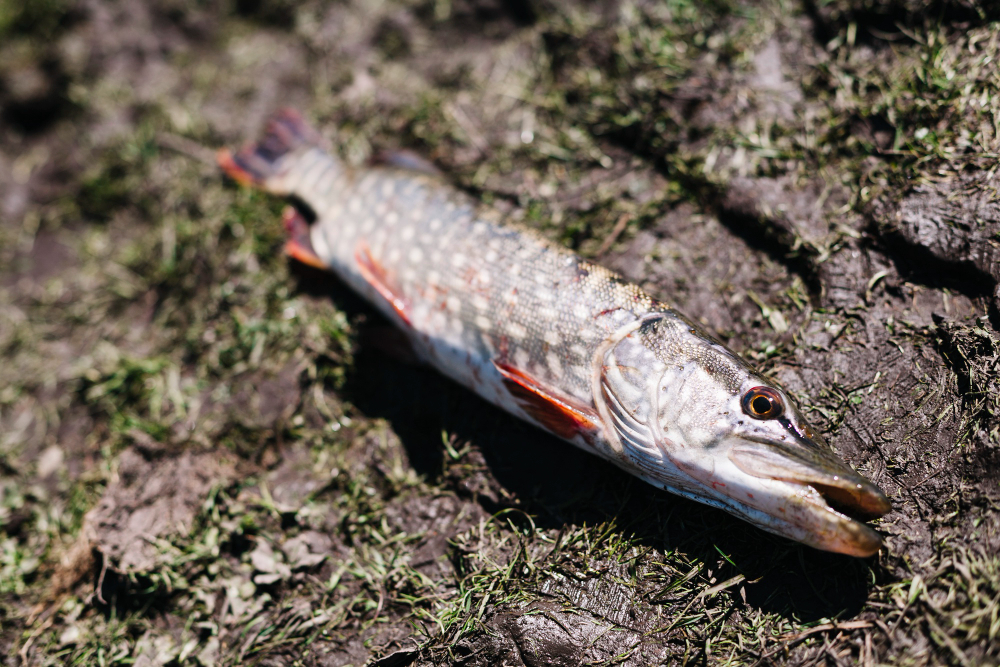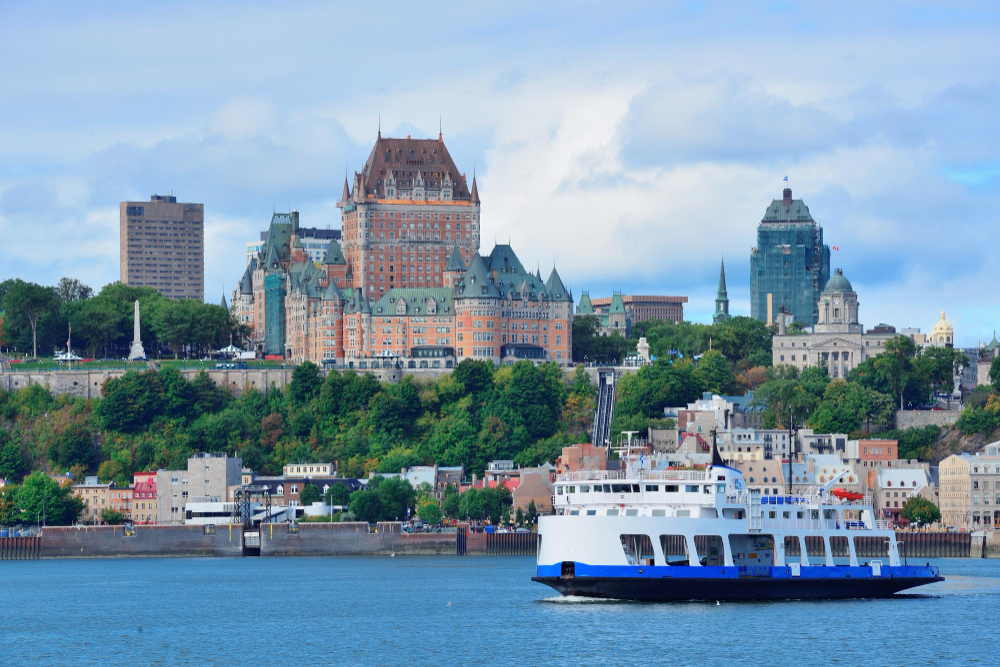Best Fishing Spots in Canada: Top 10 Locations Recommended
Canada is famous for its rich freshwater resources and wide variety of fish, making it a paradise for anglers. From vast lakes and winding rivers to peaceful streams and breathtaking coastlines, the country offers endless places to cast your line.
Whether you’re an experienced angler or just starting out, we’re here to help you find the best fishing spots in Canada and plan your perfect fishing trip.
If you’re searching for fishing spots near you, the best fishing locations in this guide are a great place to begin your adventure. Read on!
The 10 Best Fishing Spots in Canada
Canada has over two million lakes and many rivers, giving anglers endless fishing options. Here are ten of the best fishing spots in Canada to explore.
Quebec City, Quebec
Quebec City, set beside the St. Lawrence River, is known for its stunning European-style architecture and rich history. The nearby waters are full of fish, offering plenty of chances to enjoy a great fishing experience right within the city.
Main Fish Species: Bass, walleye, perch, sturgeon, pike, muskellunge, brook trout, and rainbow trout, among other varieties.
Best Fishing Time: May to October
Nanaimo, British Columbia
Nanaimo, tucked along Vancouver Island’s eastern shore, serves up year-round Chinook Salmon action in its rich coastal waters. Just a short ferry ride from Vancouver, this laid-back harbour town blends epic fishing with easy access to city vibes and wild escapes.
Main Fish Species: Chinook salmon, coho salmon, chum salmon, sockeye and pink salmon, trout, halibut, and Dungeness crab.
Best Fishing Time: Open year-round
Calgary, Alberta
At the eastern foothills of the Rocky Mountains, the Bow River flows through downtown Calgary, offering some of the best trout fishing in North America. Its clear waters and steady flow attract fly-fishing enthusiasts from around the world.
Main Fish Species: Brown trout and rainbow trout
Best Fishing Time: Late June to October
Dauphin Lake, Manitoba
In the heart of Manitoba, Dauphin Lake is one of the province’s most popular freshwater fishing spots. Spanning about 210 square kilometers, the lake is well known for its great ice fishing and plentiful walleye.
Main Fish Species: Walleye, northern pike, perch, sauger, and freshwater drum.
Best Fishing Time: Summer (May-August) for open water fishing, winter (December-March) for the golden ice fishing period.

Fort Frances, Ontario
In northwestern Ontario, Fort Frances serves as the gateway to the famous Rainy Lake. The area is known for its world-class bass fishing, drawing professional anglers and fishing enthusiasts from across the country every year.
Main Fish Species: Smallmouth bass, largemouth bass, northern pike.
Best Fishing Time: Mid-May to October.
Bras d'Or Lake, Nova Scotia
Bras d'Or Lake is a saltwater lake in North America, located in the heart of Cape Breton Island, with a shoreline exceeding 1,000 kilometers, providing abundant wading and boat fishing opportunities. Taking fishing boats to explore the lake's numerous bays and islands can help discover hidden fishing hotspots.
Main Fish Species: Atlantic salmon, striped bass, brook trout, brown trout, and cod.
Best Fishing Time: Open year-round.
Lac Baptiste, Quebec
Lac Baptiste is in northern Quebec and remains a peaceful and largely untouched fishing paradise. With its clear waters and unspoiled surroundings, it’s the perfect spot for anglers who enjoy a quiet and relaxing fishing experience away from the crowds.
Main Fish Species: Northern pike and lake trout.
Best Fishing Time: Mid-June to late August.
Grande Cascapedia River, Quebec
The Grande Cascapedia River in Quebec’s Gaspé Peninsula is famous for its giant Atlantic salmon. Many anglers call them Cascapedia Giants. The water is clear, the guides are skilled, and the nearby lodges are cozy, perfect for an unforgettable fishing trip.
Main Fish Species: Atlantic salmon.
Best Fishing Time: Mid-June to September.
St. Lawrence River, Ontario
The St. Lawrence River is one of North America's most important waterways, and its Ontario section provides diverse fishing experiences. Anglers who enjoy night fishing will find that the lake's walleye are particularly active after sunset.
Main Fish Species: Smallmouth bass, northern pike, catfish, carp, and various warm-water species.
Best Fishing Time: Best after the early July opener.
Loughborough Lake, Ontario
Located in southeastern Ontario, Loughborough Lake is an elongated lake divided into two distinctly different sections. The eastern basin is shallower, while the western basin reaches depths of 130 feet (approximately 39.5 meters), providing diverse options for different types of fishing enthusiasts.
Main Fish Species: Smallmouth bass, largemouth bass, northern pike, lake trout, and various panfish.
Best Fishing Time: Fall is ideal.
When Is the Best Time to Fish in Canada?
The best fishing time in Canada varies by region, target species, and season. Here's a fishing guide organized by season and fish species:
Spring (April-June)
Spring is when many fish species become active, especially after ice melt.
Best Fish Species:
Smallmouth and Largemouth Bass: Mid-May to June is the spawning season when fish congregate in shallow areas
Trout: April to May, as lake and stream temperatures rise
Northern Pike: May to early June, shortly after ice-out
Catfish: Late May to June, as water temperatures increase
Best Locations: Southern Ontario lakes, southern Quebec rivers, British Columbia interior lakes.

Summer (June-August)
Summer is peak fishing season in Canada, with virtually all waters open and fish active.
Best Fish Species:
Salmon: July to August, as Pacific and Atlantic salmon begin their runs
Northern Pike: June to August, in deeper, cooler waters
Lake Trout: June to July, in northern lakes
Walleye: July to August, active in warm shallow areas
Best Locations: British Columbia coastal rivers, northern Ontario lakes, Nova Scotia rivers, Newfoundland coast.
Autumn (September-November)
Autumn provides some of the year's best fishing opportunities, as many species feed actively to prepare for winter.
Best Fish Species:
Salmon: September to October, peak of major runs
Trout: September to October, actively feeding in streams and lakes
Smallmouth Bass: Early September to mid-October, actively feeding to prepare for winter
Catfish: September to early October, feeding actively before water temperatures drop
Best Locations: British Columbia and Quebec rivers, Ontario lakes, Alberta streams.
Winter (December-March)
Winter provides unique ice fishing experiences, though options are more limited. To ensure stable power on the ice, many fishing enthusiasts choose to carry specialized power stations for ice fishing.
Best Fish Species:
Lake Trout and Brook Trout: December to February, active under the ice
Whitefish: January to March, in northern lakes
Northern Pike: December to February, in deeper waters
Yellow Perch: Throughout winter, a popular ice fishing species
Best Locations: Ontario lakes, northern Quebec, Manitoba, Saskatchewan.
How to Plan Your Fishing Trip
Planning a successful fishing trip requires careful consideration of multiple factors. Here are key steps to help you plan the perfect fishing experience:
Research Fishing Locations: Choose appropriate waters based on target species, consider suitable fishing methods (fly fishing, trolling, ice fishing, etc.), accessibility, and surrounding facilities.
Understand Regulations: Obtain legal fishing licenses in advance, familiarize yourself with species size and quantity limits, open seasons, and special area regulations.
Prepare Equipment: Select appropriate rods, reels, and lines, match with suitable bait or lures, and prepare nets, pliers, knives, and measuring tools. Don’t forget handy extras like the EcoFlow Power Hat to keep your gear charged and ready.
Safety and Survival Gear: Bring a first aid kit, phone or radio, map or GPS, and a portable power source. The EcoFlow RIVER 2 Pro Portable Power Station is a great choice. It’s light, easy to carry, and strong enough to power your essential devices all day.
EcoFlow RIVER 2 Pro Portable Power Station
Fishing Etiquette Every Angler Should Know
Good fishing etiquette not only helps ensure a pleasant experience for all anglers but also helps protect aquatic ecosystems. Here are basic etiquette rules every angler should follow:
Respect the Environment: Pack out all trash, clean up discarded fishing gear; avoid damaging aquatic plants and wildlife habitat.
Respect Others: Maintain spacing between fishing spots, avoid interference; control noise; share popular fishing locations, don't monopolize for extended periods; follow "first come, first served" principle.
Follow Regulations: Carry valid fishing licenses at all times; comply with species size and quantity limits; fish during open seasons.
Catch and Release: Quickly release fish to reduce dehydration; use knotless nets to protect fish bodies; avoid touching fish gills.
Conclusion
Canada’s top fishing spots offer something for every angler—coastal salmon runs, deep lake fishing, and remote river retreats. To make the most of your trip, plan carefully around seasons, species, gear, and safety.
A reliable power source is just as essential, especially when you're off the grid. EcoFlow’s portable power stations are built for these moments, keeping your gear charged and your trip running smoothly, no matter where your next cast takes you.
FAQs
Does Montreal Have Good Fishing?
Yes, Montreal offers great fishing right in the city. The St. Lawrence River is full of species like bass, carp, catfish, pike, sturgeon, and walleye, making it a favorite year-round spot for local anglers. A top place to cast a line is Pointe de la Cité-du-Havre, where many enjoy hours of free, easy-access fishing.
Just outside the city, the Lake of Two Mountains is another excellent choice. From May to November, anglers can catch smallmouth and largemouth bass, northern pike, muskie, and walleye. Just don’t forget to get your fishing permit before heading out!
How Do I Find Good Fishing Spots?
Finding a good place to fish takes a bit of planning and local knowledge. Here are some easy ways to help you out:
Look online: Check fishing websites, apps, or government pages for maps and tips.
Ask locals: Visit a bait or tackle shop and chat with the staff — they usually know where the fish are biting.
Use maps: Find areas with deeper water, rocks, or currents where fish like to stay.
Watch the seasons: Fish move as the weather changes, so learn when and where they feed.
Pay attention to nature: Birds diving, bugs on the water, or ripples often mean fish are nearby.
Hire a guide: A local fishing guide can take you to good spots and teach you helpful techniques.
Do I Need a License to Fish in Canada?
Yes, you need a fishing license to fish in most places across Canada. Each province and territory has its own rules and licensing system.
There are usually different license types for residents and non-residents, and some areas offer exemptions for youth or seniors. Before your trip, check the local fishing rules for the area you plan to visit.
You can buy a license online, by phone, or from authorized vendors, and the cost will vary depending on the region and type of license.